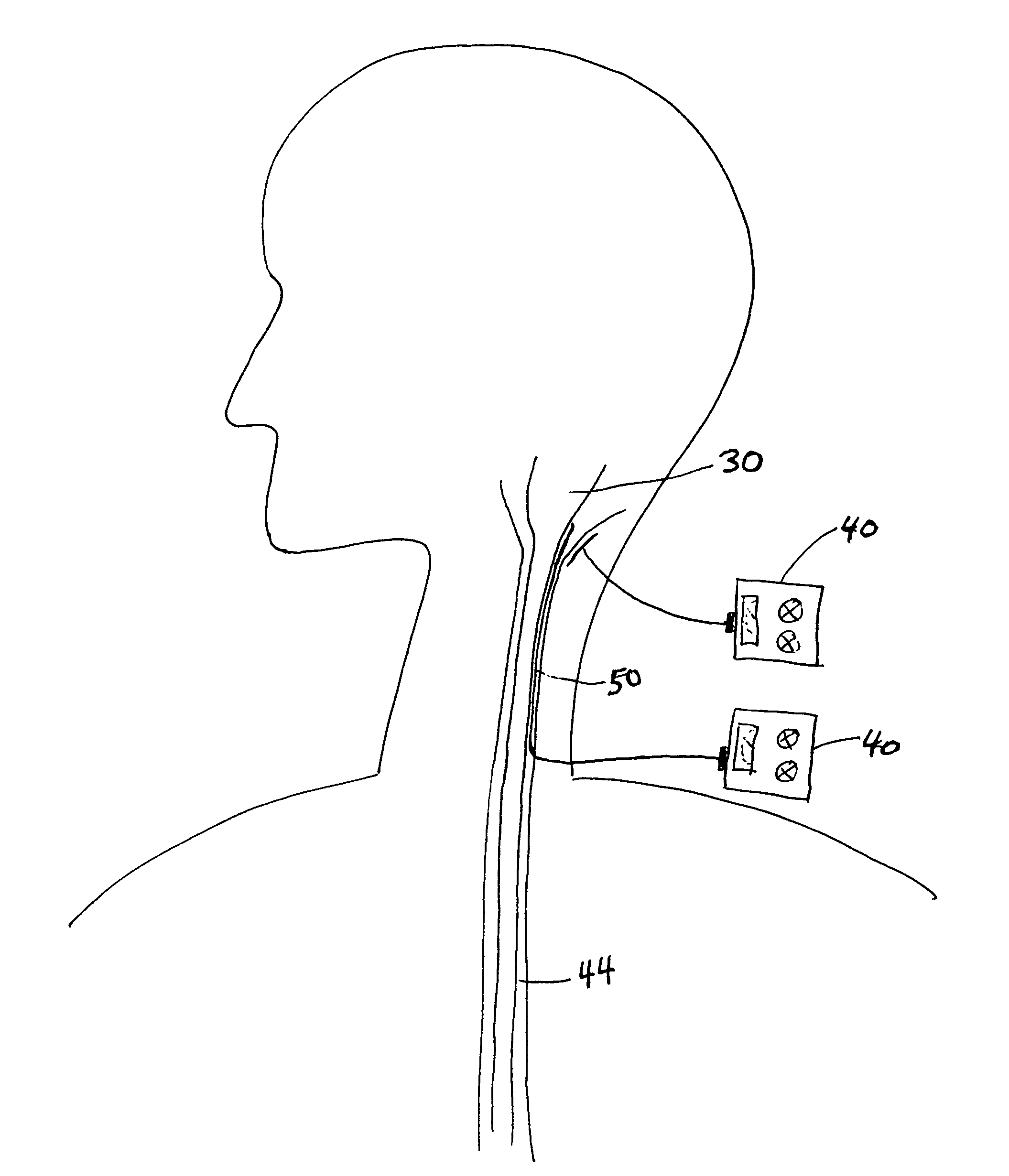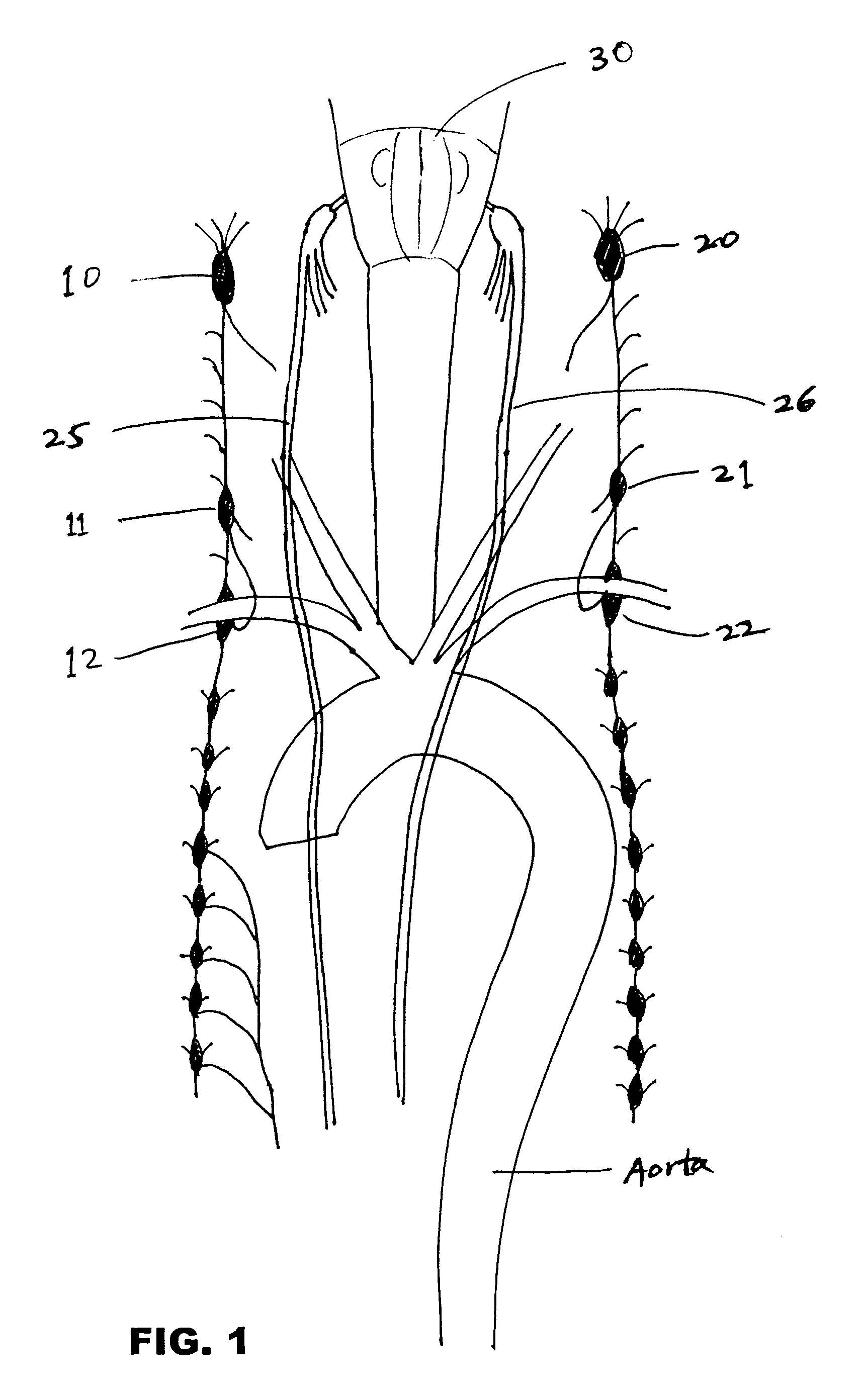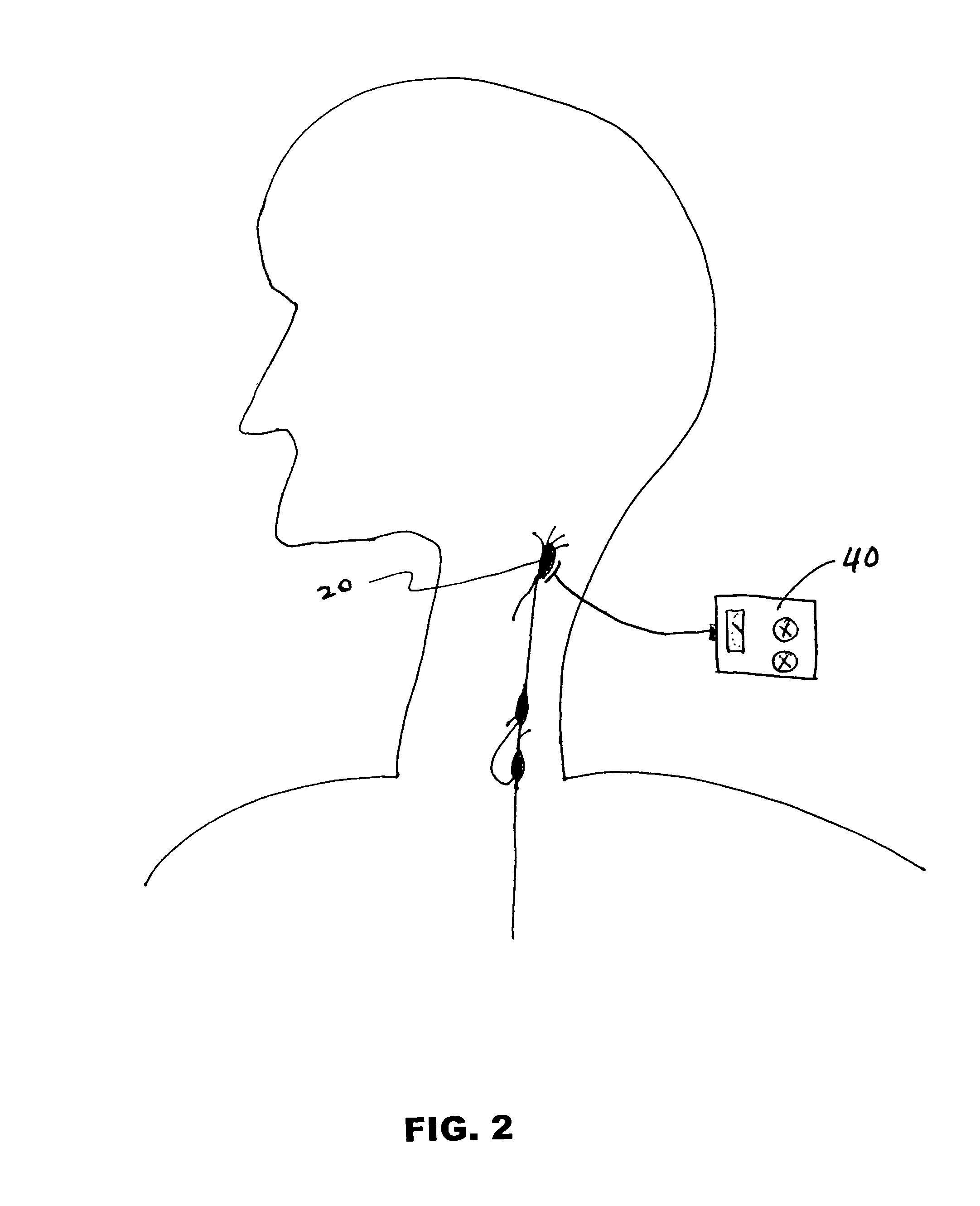Enhancement of cerebral blood flow by electrical nerve stimulation
a technology of electrical nerve stimulation and cerebral blood flow, which is applied in the field of enhancement of cerebral blood flow through electrical nerve stimulation, can solve the problems of cardiogenic shock, myocardial infarction, and reduced oxygen and nutrients in tissues, and achieve the effect of increasing cerebral blood flow
- Summary
- Abstract
- Description
- Claims
- Application Information
AI Technical Summary
Benefits of technology
Problems solved by technology
Method used
Image
Examples
Embodiment Construction
[0021]The autonomic nervous system that comprises of the parasympathetic and sympathetic nervous systems governs many bodily functions below the conscious levels. These functions include distribution of blood flow and the maintenance of tissue perfusion, and regulation of blood pressure. Changes to sympathetic and parasympathetic stimulation are frequently antagonistic and reciprocal, as exemplified by their opposing effects on vascular tone, thereby providing more precise control of the autonomic responses than by modulation of a single system.
[0022]The organization of the sympathetic and the parasympathetic systems in the cervicothoracic region is shown in FIG. 1. Longitudinal strands of autonomic nerve fibers and their associated sympathetic ganglia are located in the neck anterolateral to the vertebral column from the level of the first cervical vertebra. The right cervical sympathetic trunk contains three sympathetic ganglia—right superior cervical ganglion 10, right middle cer...
PUM
 Login to View More
Login to View More Abstract
Description
Claims
Application Information
 Login to View More
Login to View More - R&D
- Intellectual Property
- Life Sciences
- Materials
- Tech Scout
- Unparalleled Data Quality
- Higher Quality Content
- 60% Fewer Hallucinations
Browse by: Latest US Patents, China's latest patents, Technical Efficacy Thesaurus, Application Domain, Technology Topic, Popular Technical Reports.
© 2025 PatSnap. All rights reserved.Legal|Privacy policy|Modern Slavery Act Transparency Statement|Sitemap|About US| Contact US: help@patsnap.com



